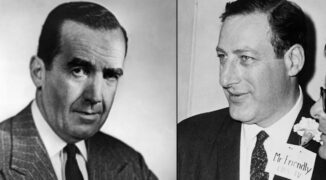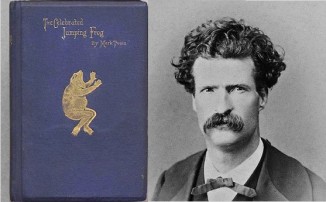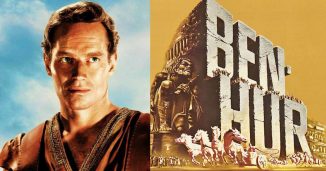Happy 49th birthday to David “Big Papi” Ortiz. The Dominican-American slugger spent nearly his whole career at the Boston Red Sox where he played a key role in breaking the 86-year World Series drought. He was elected into the MLB Hall of Fame in 2022, at the first year of his eligibility. READ some of the stunning numbers he put up… (1975)
 David Ortiz in 2009 – CC 3.0. Parkerjh
David Ortiz in 2009 – CC 3.0. ParkerjhUpon his retirement, Ortiz ranked sixth in American League history with 541 home runs, fifth in doubles (632), and ninth in RBI (1,768). Used almost exclusively as a Designated Hitter, Ortiz holds many records for the position, including for career home runs (485), RBI (1,569), and hits (2,192).
Along with these stunning numbers, one needs only comb through his Herculean heroics during the Red Sox’s run to the 2004 World Series to see why Big Papi will forever have a place in fans’ hearts.
In the AL Championship Series against the New York Yankees, the Red Sox quickly fell behind 0 games to 3, a deficit that had never been surmounted in baseball history. Ortiz almost single-handedly paved the way for history, as he hit a walk-off two-run home run against Paul Quantrill in the 12th inning of Game 4 and a walk-off single off of Esteban Loaiza in the 14th inning of Game 5. His heroics—namely batting .387 with three home runs and 11 RBI in the series—earned him AL Championship Series MVP honors, the first time a DH had ever won that award, as the Red Sox came back to win in seven games.
In the 2004 World Series vs. the St. Louis Cardinals, Ortiz set the tone for the four-game sweep as he hit a three-run home run off Woody Williams in the first inning of Game 1 at Fenway Park. He hit .308 in the series with a home run and 4 RBI as the Red Sox swept the Cardinals to end the Curse of the Bambino by winning their first World Series Championship in 86 years. Overall, Ortiz batted .400 in the 2004 postseason with five home runs and 23 RBI.
MORE Good News on this Date:
73 years ago today, the pioneering newsmagazine series, See It Now, was first broadcast. Running for seven years on CBS, it was created by iconic newsman Edward R. Murrow, along with CBS News President Fred Friendly.

Murrow hosted the show, which won four Emmys and also a Peabody Award, which honors the most powerful stories in television and radio.
Murrow produced a number of episodes of See It Now that dealt with the Communist witch-hunt hysteria in the U.S. Senate led by disgraced Wisconsin Republican Joseph McCarthy, bringing to light his bullying persecution of artists, writers, and political opponents. One of the more notable episodes resulted in a U.S. military officer, Milo Radulovich, being acquitted, after being charged with supporting Communism.
Nine months later—and following the suicide of Democratic Senator Lester Hunt, after McCarthy threatened to smear his son if he ran for re-election—the Senate voted to censure McCarthy by a vote of 67–22, making him one of the few senators ever disciplined in this fashion. (1951)
And on this day in 1307, the Swiss marksman and patriot William Tell is said to have successfully shot an apple off his son’s head.

In resistance to the Habsburg Empire’s bid to rule central Switzerland, Tell refused to bow to a hat and was arrested. The story goes, he was offered his freedom if a single crossbow shot at the apple was successful. His blow for liberty sparked a rebellion in which he played a leading role in the ultimate creation of the Swiss Confederacy.
The William Tell Overture, composed by Rossini in 1829 is one of his best-known and most frequently imitated pieces of music—you may know it as the theme for the television show, the Lone Ranger. WATCH a 1-min animated history below…
And, 159 years ago today, Mark Twain’s first successful short story, Jim Smiley and His Jumping Frog, was published in the New York Saturday Press. It was his first great success as a writer and brought him national attention.

In the story, the narrator retells a story he heard from a bartender, about the gambler Jim Smiley: “If he even seen a straddle bug start to go anywheres, he would bet you how long it would take him to get to wherever he going to, and if you took him up, he would foller that straddle bug to Mexico…”
The story was developed further as The Celebrated Jumping Frog of Calaveras County, which was also the title story of Twain’s first book, a collection of 27 stories that were previously published in newspapers and magazines. (1865)
And, 65 years ago today, the film Ben-Hur, starring Charlton Heston, premiered. The fictional historical drama set in the time of Jesus is centered around a wealthy Jewish prince who is condemned to slavery on trumped-up charges by a childhood friend, who also throws Judah’s family in prison. Judah Ben-Hur swears to come back and take revenge.

The Oscar-winning film had the largest budget ($15 million) and the most massive constructed sets of any film produced until then. Over 200 camels and 2,500 horses were used in the shooting of the film, with some 10,000 actors. The nine-minute chariot race scene has become one of cinema’s most famous action sequences.
Based on the book, Ben-Hur: A Tale of the Christ, by Lew Wallace, the film won a record eleven Academy Awards, including Best Picture, Best Director, Best Actor (for Heston), Best Supporting Actor, and Best Cinematography. WATCH the scene when Judah returns and demands the return of his family, surprising the deceitful Roman from whom he eventually exacts revenge during the chariot race… (1959)
SHARE the Milestones, Memories, and Movies…
Source link

